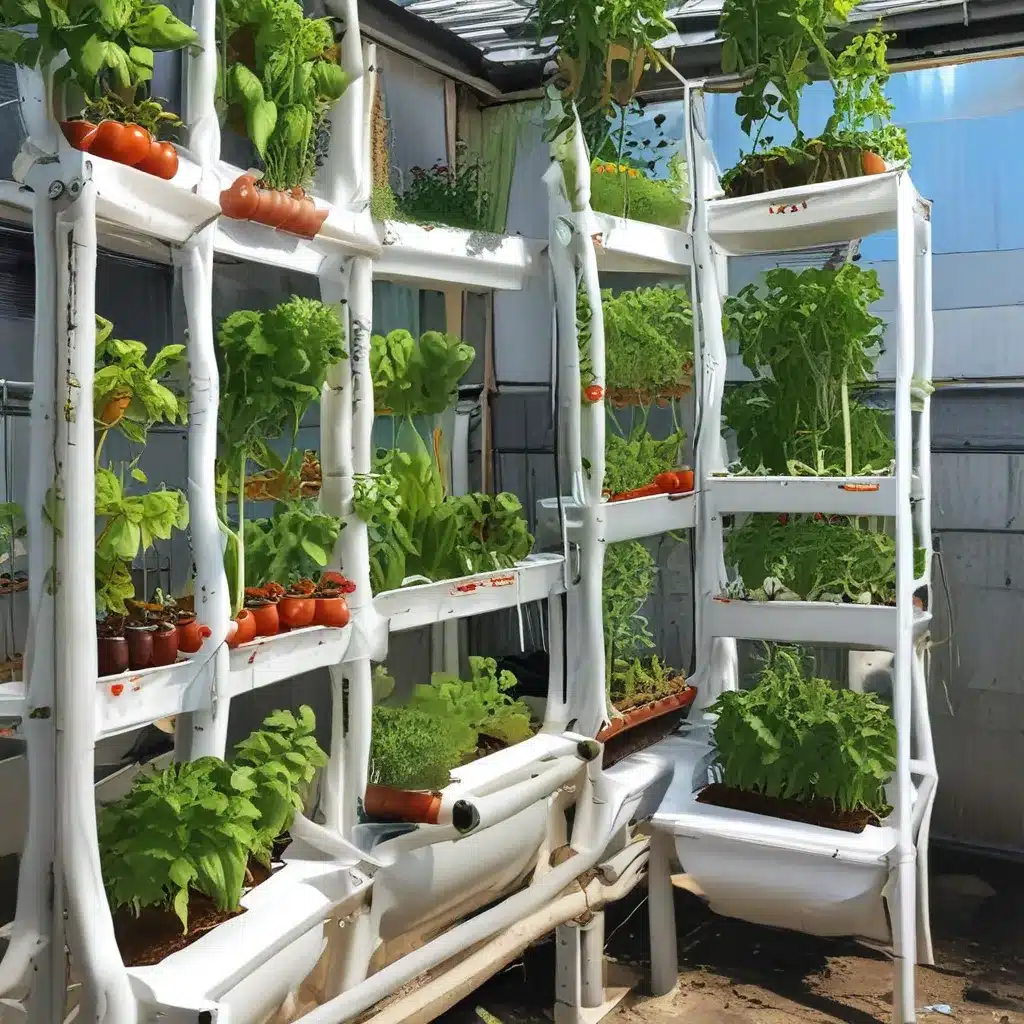
Diving into the Fascinating World of Aquaponics
As a passionate urban gardener, I’ve always been fascinated by the concept of aquaponics – a sustainable agriculture system that combines fish farming and soil-free plant cultivation. Imagine being able to grow your own fresh, nutritious produce while also raising healthy fish, all within a closed-loop ecosystem. When I learned about the potential of using aquaponics to grow food on Mars, I knew I had to dive deeper into this captivating topic.
The Promise of Aquaponics for Space Exploration
With the increasing interest in space exploration and the possibility of establishing a human settlement on Mars, it’s natural to wonder if it’s possible to grow food on the Red Planet. One of the most promising options, according to the experts at Recirculating Farms Coalition, is the use of aquaponics. This sustainable agriculture system combines traditional aquaculture (fish farming) with hydroponics (soil-free plant cultivation), creating a self-sustaining closed-loop ecosystem.
The beauty of aquaponics is that the waste produced by the fish provides the necessary nutrients for the plants, while the plants, in turn, clean the water for the fish. It’s a symbiotic relationship that could be the key to unlocking the potential for food production on the harsh Martian environment.
Overcoming the Challenges of Aquaponics on Mars
Growing food on Mars presents significant challenges, including a lack of atmosphere, extreme temperature fluctuations, and harsh radiation conditions. However, the closed-loop nature of aquaponics systems makes them an ideal solution for these conditions.
As the team at Go Green Aquaponics explains, “Not only does an aquaponics garden on Mars provide a sustainable food source for astronauts, but it also offers the potential for scientific discovery. By studying how plants and fish grow and interact in the harsh Martian environment, we can gain new insights into the potential for agriculture on other planets and moons.”
The Importance of Microorganisms in Martian Aquaponics
One of the key components of a successful aquaponics system is the presence of microorganisms, such as bacteria and fungi, that play a crucial role in breaking down waste products from the fish and converting them into nutrients that can be used by the plants. While the harsh environment on Mars may have an impact on the survival of these microorganisms, it’s still possible to incorporate them into an aquaponics system on the Red Planet.
According to the experts at AquaSprouts, “To do this, special measures must be taken to ensure their survival and health, including the use of specially-engineered microbial habitats and the selection of hardy microbial species that can withstand the harsh Martian environment.”
Incorporating these microorganisms into an aquaponics system on Mars would further improve the sustainability of the system by allowing for the efficient recycling of waste products and reducing the need for external inputs such as fertilizers and nutrients.
Cultivating Diversity on the Red Planet
Another important consideration for an aquaponics garden on Mars is the selection of plant species that can thrive in the harsh Martian environment. As the experts at Recirculating Farms Coalition suggest, “A diverse range of plant species, including leafy greens, herbs, and root vegetables, would not only provide a nutritious and varied diet for astronauts, but also provide a more stable and resilient ecosystem.”
Additionally, it’s crucial to consider the impact that growing certain plants may have on the closed-loop nature of the system. For example, some plants may produce more waste products than others, which could impact the health and survival of the fish. By carefully selecting plant species and monitoring their impact on the system, it’s possible to maintain a balanced and sustainable aquaponics garden on Mars.
Embracing the Challenges, Envisioning the Future
Growing food on Mars poses numerous challenges, from the harsh and unpredictable Martian environment to the limited resources and lack of soil for traditional agriculture. However, as we’ve explored, aquaponics offers a promising solution that could provide a sustainable food source for future Mars missions and settlements.
As technology continues to advance and we gain a deeper understanding of the conditions on Mars, it’s likely that we will see further developments in this area, including the establishment of larger and more complex aquaponics systems. The future of aquaponics on Mars is truly exciting, holding the potential for scientific and technological advancements that could benefit not only space exploration but also life on Earth.
So, as I continue my journey as an urban gardener, I can’t help but be inspired by the possibilities of aquaponics on Mars. Who knows, maybe one day I’ll be able to apply these principles to my own backyard, creating a self-sustaining ecosystem that helps me grow the healthiest and most delicious produce. Until then, I’ll keep exploring the wonders of aquaponics, dreaming of the day when we can cultivate the Red Planet with the same care and dedication we put into our own gardens here on Earth.



